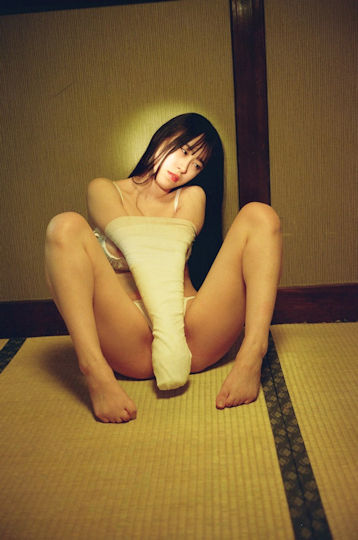Source: Dazeddigital.com
USA/JAPAN – Sofiya Loriashvili’s latest bondage-inspired series explores the tension between self-restraint and surrender in the city’s streets and love hotels.

It has been said that Tokyo demonstrates that ‘city’ is a verb, not a noun. The Japanese capital is known as a lively metropolis that moves with an effortless rhythm. But by night, the choreography loosens, commuters rush for the last train as the city’s nightlife stirs. This tension between control and surrender forms the basis of 31 days in Japan, the latest photo series by photographer Sofiya Loriashvili.

“In Tokyo after 6pm, there’s a really strong drinking culture,” Loriashvili tells Dazed. “People go out, drink until they black out, and sometimes just pass out on the street. I loved that chaos, but I think it’s simply the result of highly self-controlled days.” For a city that usually operates within defined social codes of work culture, etiquette and expectations of composure, after hours gives way to disorder.
As an outsider navigating the city alone, Loriashvili found herself attuned to its shifting rhythms. “I love to spend time on my own,” she says. “What I love even more is to be alone and surrounded at the same time. I always loved to work in crowded places but being on my own in my head. I need to be alone in order to see.” Removed from the city’s social codes, her lens shifted to the pattern of control and release that Tokyo moved through. Mostly shooting strangers and online encounters, she explains: “I oscillate between having a precise vision and letting the people I meet shape the work,” she explains. “Sometimes, it’s not even them, but their environment that inspires me.”
This tension carries through the series, mirrored in Loriashvili’s use of shibari, Japan’s traditional form of rope bondage. “There’s something very similar visually between shibari and unconscious drunk bodies,” she says. Her photos of slumped bodies on the street mirroring those of subjects with bound limbs, both folded into submission. The comparison is shot across two distinct settings: the overstimulated mess of Tokyo’s streets after hours and the sealed-off interiors of love hotels.
Finding a space where where control and release coexist, the series is backdropped by hallmarks of love hotels. Oak panelling, gaudy wallpaper, and jarring, patterned chaise longues occupy the shots. “For me, the place I shoot matters more than the subject,” Loriashvili explains. “I like to think walls remember everything,” she says. “When I was planning my shoots, I went down an internet rabbit hole looking for love hotels that hadn’t been renovated. I wanted places that felt like they had a story, something old and used.”
While the series centres on subjects and their interactions, absence is just as revealing as presence in 31 days in Japan. A sticky stained carpet, a glowing hotel number, an overflowing litter bag – traces from the bodies that have passed through catch Loriashvili’s attention. This eye to detail is a defining motif of her work, seen within her previous project My Book, where Loriashvili captured the residue of human presence in rented apartments. “The images without subjects interest me even more because I can use my imagination or investigate what happened,” she says. The same curiosity drew her to photograph the city’s metro stations by night, where platforms were “covered in body fluids, puke everywhere”.
Japan’s love hotels – private rooms that can be rented by the hour – are designed to hold desire in its most temporary form. But while love hotels may offer privacy away from Tokyo’s restless streets, their existence is free from secrecy. “I’m not sure love hotels are really that anonymous,” Loriashvili notes. “In Japan, they seem pretty normal. There are tons of them, and I don’t think there’s any shame around using them.” The buildings sit in plain sight, often signposted with hearts and folded into the city’s infrastructure.
Against these backdrops, Loriashvili’s work stage bodies in various states of tension. Inspired by the forms encountered in erotic BDSM photoshoots, the swing between control and release is expressed through restriction: ankles and wrists bound by buckles, faces wrapped entirely in paper, and limbs locked behind backs. “I love how the human body can be transformed into a visual object. I love the shapes it can take,” Loriashvili says. “I’m really impressed by dancers and contortionists. Bondage and mummification feel like a natural extension of that.”
But while the faceless anonymity of BDSM can often evoke something detached, Loriashvili’s images present a more intimate and playful approach. This presentation is informed by her own relationship to BDSM, “Personally, I can say that restraint has always felt safe for me.” Even despite many of the photograph’s subjects being strangers at first, found online, and at times, using translating apps to communicate entirely. Through warm lighting, mirror reflections, and collaborative poses, the series reframes restraint as both vulnerable and inviting. It’s through this exploration of tension and release that Loriashvili creates a space where intimacy is found not only in the absence of control, but in its embrace.
Visit the gallery above for a closer look at Sofiya Loriashvili’s 31 days in Japan.

